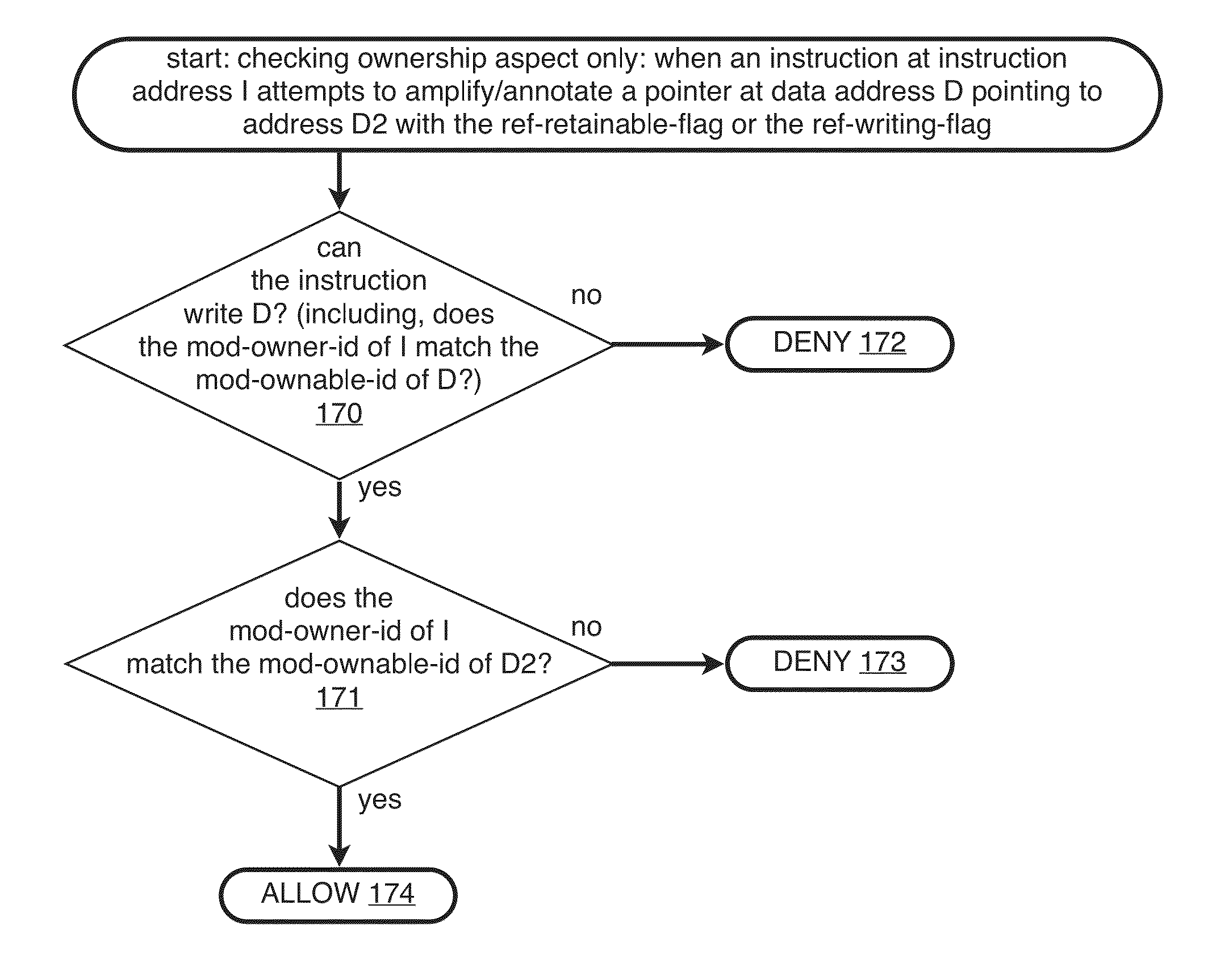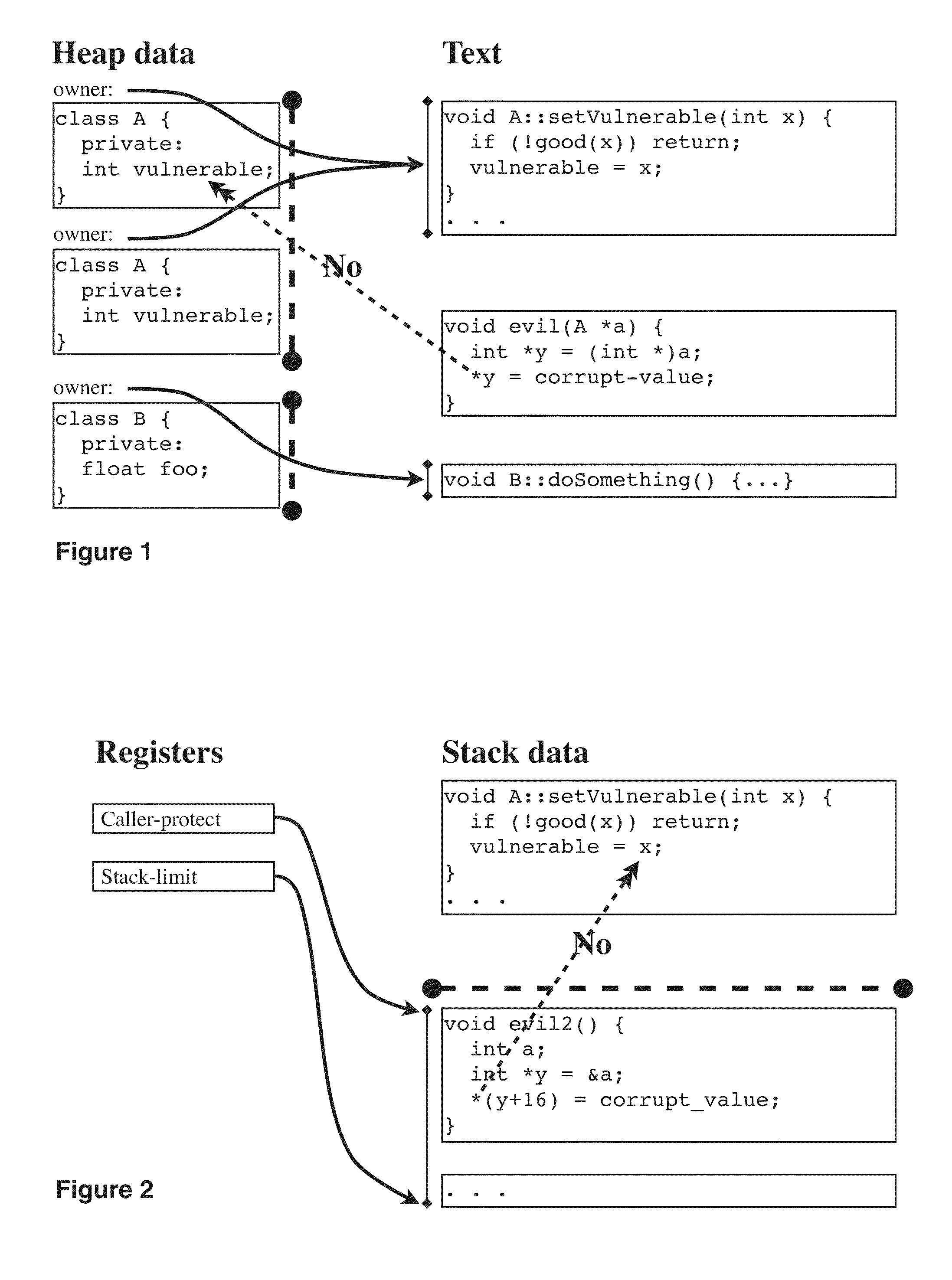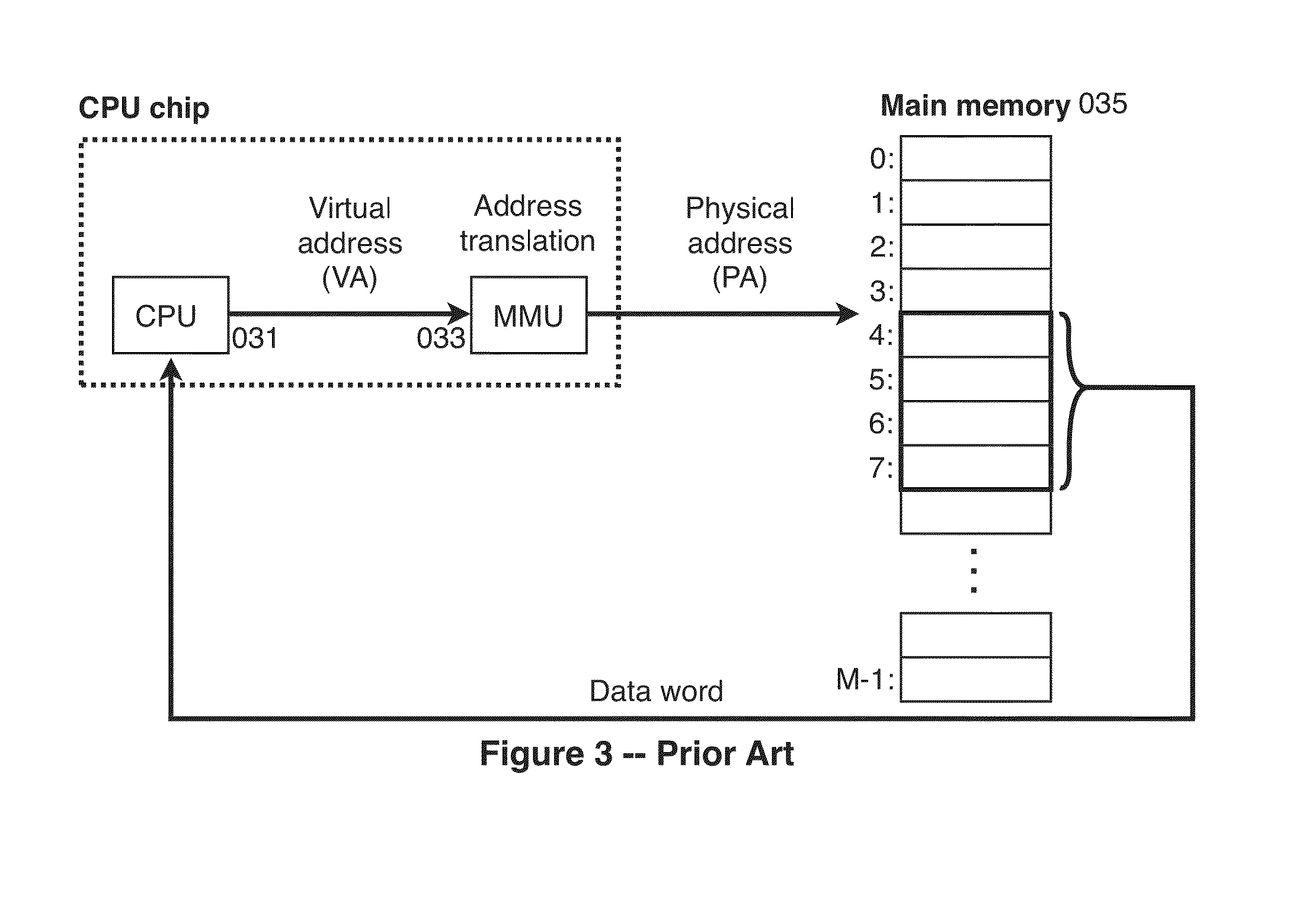Hard Object: Lightweight Hardware Enforcement of Encapsulation, Unforgeability, and Transactionality
a technology of encapsulation and hardware enforcement, applied in the field of hard object of lightweight hardware enforcement of encapsulation, unforgeability, and transactionality, can solve the problems of affecting the reliability and security of machines made of bits (programs), unable to efficiently enforce the localization of fine-grain hardware primitives, and the whole domain of software is buggy and unsafe. achieve the effect of safe and efficient running in the same address space, more modularity, and more reliability
- Summary
- Abstract
- Description
- Claims
- Application Information
AI Technical Summary
Benefits of technology
Problems solved by technology
Method used
Image
Examples
embodiment 2
[0314]Hard Object annotates pages with metadata by extending the prior art page table entry structure (in this document sometimes abbreviated as “PTE”). (Note that extending the PTE is only one possible method of annotating meta-data onto memory locations; other methods are possible, such as the hardware or the kernel keeping other data structures in memory which hold the meta-data and which are put in correspondence with the memory locations which they annotate, such as using a hashtable, or using a formula to compute the address holding the meta-data from the address which the meta-data annotates; for example, such a formula could include shifting of some of the low the bits of the address being annotated and substituting some of the high bits.) (Later we refine the granularity of annotation to that of sub-page regions which can be used to annotate individual objects; see §4.10.)[0315]Add a 2-bit page-kind-enum to each legacy page table entry. (In this embodiment, for the purposes...
first embodiment
[0986]However, in the first embodiment, sometimes it is necessary for these fields of an agent-gate to be modified, such as when a system library uses master powers to set up an agent-gate in the first place, or when a garbage-collector is traversing memory and must ensure traversal of every link, even those hidden in caches. In this embodiment, in such situations, the system library must take sync from whatever agent has sync, and further keep sync by setting agent-gate-syncable-str-suff-len to −1. Further, in this embodiment, this system library must also require the core running that agent to flush its cache of that object; finding that core is straightforward if the convention of §4.7.10 is adopted.
[0987]However, in this embodiment, these operations only arise in situations where actions are being taken that require master powers. Thus, in this embodiment, one may also constrain these take-sync-and-flush operations to be performable only with master powers.
[0988]Small Object and...
PUM
 Login to View More
Login to View More Abstract
Description
Claims
Application Information
 Login to View More
Login to View More - R&D
- Intellectual Property
- Life Sciences
- Materials
- Tech Scout
- Unparalleled Data Quality
- Higher Quality Content
- 60% Fewer Hallucinations
Browse by: Latest US Patents, China's latest patents, Technical Efficacy Thesaurus, Application Domain, Technology Topic, Popular Technical Reports.
© 2025 PatSnap. All rights reserved.Legal|Privacy policy|Modern Slavery Act Transparency Statement|Sitemap|About US| Contact US: help@patsnap.com



